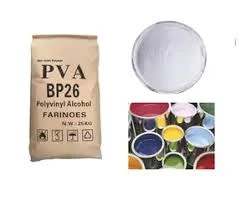Understanding Additive Percentage in the Context of Putty
Putty, a versatile construction material, is commonly used in a variety of applications, including sealing, filling, and surface smoothing. Its formulation can be significantly enhanced with the use of additives, which improve its performance characteristics. One critical aspect that technologists and manufacturers consider is the additive percentage in the putty mixture. This article will delve into the significance of this percentage, its impact on putty characteristics, and how optimal formulation can influence overall performance.
The Role of Additives in Putty
Additives are substances incorporated into putty to improve its properties beyond what is achievable with the base materials alone. The most common types of additives include binders, fillers, retarders, accelerators, and plasticizers. Each additive serves a specific purpose for instance, fillers can enhance bulk and reduce cost, while plasticizers may improve workability and flexibility.
The additive percentage refers to the proportion of these additional components relative to the total formulation. This percentage can notably influence the putty's performance, directly impacting its adhesion, texture, drying time, and durability.
Importance of Optimal Additive Percentage
Finding the right balance in additive percentage is crucial for maximizing the efficacy of putty. Too little of an additive may result in suboptimal performance, such as inadequate adhesion or increased drying times. Conversely, too much can lead to negative outcomes, including decreased strength, excessively rapid drying, or even undesirable color changes.
For instance, when producing a putty designed for exterior use, manufacturers might choose a higher percentage of weather-resistant additives. These can include fungicides and UV stabilizers, which enhance the putty's resilience against environmental factors. The appropriate formulation allows the putty to maintain its integrity and appearance over time, making it suitable for long-lasting applications.
additive for putty

Formulation Techniques
To determine the optimal additive percentage, formulators often rely on a combination of empirical data and testing. During the formulation phase, small batches of putty are created with varying percentages of additives. These batches undergo rigorous testing to evaluate their workability, drying times, adhesion strength, and other performance metrics.
Analytical tools and methods such as rheology measurements can provide insights into the flow behavior of putty with different additive compositions. Such data allows formulators to refine their approach, ensuring that the final product meets or exceeds industry standards and customer expectations.
The Influence of Production Scale
Moreover, the production scale can affect the choice of additive percentages. For large-scale production, cost-effectiveness becomes a primary concern. In such cases, formulators may opt for a slightly higher percentage of economical fillers, which can reduce the overall production cost while maintaining satisfactory performance levels. However, manufacturers must carefully assess whether this trade-off impacts the quality of the final product.
Conversely, in small-scale or specialized production, such as bespoke putties for artisanal applications, a greater emphasis might be placed on performance quality rather than cost. Here, formulators may choose to invest in higher-quality or more specialized additives that can command a higher price but yield superior results.
Conclusion
In conclusion, the additive percentage plays a pivotal role in the formulation of putty. Striking a balance between different components is essential for achieving the desired performance characteristics. As the construction industry continues to evolve, with advancements in materials science and technology, the understanding of how different additive percentages influence putty will remain crucial. Manufacturers that invest in research and development to optimize their formulations will not only enhance the quality of their products but also ensure their competitiveness in the market. Thus, the art and science of formulating effective putty hinge significantly on the careful consideration of additive percentages.
-
A Comprehensive Guide to Methyl Ethyl Hydroxyethyl Cellulose: Applications and Industry InsightsNewsNov.24,2025
-
Understanding Methyl 2 Hydroxyethyl Cellulose: Uses, Benefits & Industry InsightsNewsNov.24,2025
-
Hydroxyethyl Methyl Cellulose HEMC: Industrial Uses, Benefits & Future TrendsNewsNov.23,2025
-
HEMC Cellulose: Versatile & Sustainable Industrial Polymer | YoungcelNewsNov.23,2025
-
Methyl Hydroxyethyl Cellulose: Versatile Building Block for Industry & SustainabilityNewsNov.23,2025
-
CAS 9032 42 2: Understanding Polyvinyl Alcohol's Impact on Industry & SustainabilityNewsNov.22,2025




